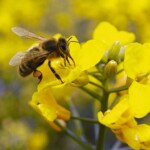 By Courtney Meduna
By Courtney Meduna
Technology is being adapted for agriculture at a super speed, empowering farmers to be more targeted and precise in their operations. In fact, according to AgTech Digest, the precision agriculture market, valued at $9.4 billion in 2022, is expected to grow 12.6 percent by 2030.
Precision agriculture is a blanket term for anything that employs technology to improve crop yields and on-farm decision making. Many aspects of it are used on a broad scale today, such as auto-steer in equipment and GPS guidance. We also have section control across all types of equipment, allowing for better utilization of seed and chemistry, as well as more accurate data collection at harvest. We even now have satellite imagery, variable rate technology and (Unmanned Aerial Vehicle (UAV) adaptations (drones) to help improve efficiency. Read More »
 By Tom Hance
By Tom Hance By Angela Dansby
By Angela Dansby
 By Anitha Chirumamilla and Bryan Hanson
By Anitha Chirumamilla and Bryan Hanson Adapted from the
Adapted from the  By Girisha Ganjegunte, Ph.D.
By Girisha Ganjegunte, Ph.D. By Mike Stamm
By Mike Stamm In honor of World Bee Day on May 20, now is the perfect time for canola growers to BeSure! they are doing everything to protect pollinators. Here are a few tips from the
In honor of World Bee Day on May 20, now is the perfect time for canola growers to BeSure! they are doing everything to protect pollinators. Here are a few tips from the  By Ed Prosser
By Ed Prosser